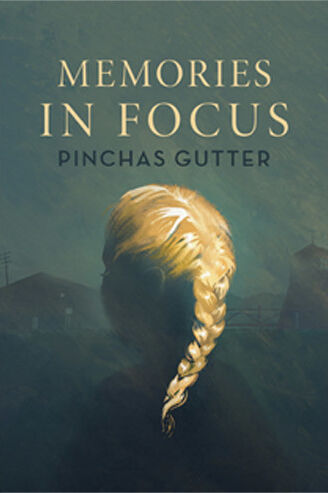Memories in Focus (Traduction française à venir)
Memories of the Warsaw Ghetto Uprising
I took my book, Gone with the Wind, which I had been reading for a while, with me to the bunker and I read it front to back many times. There must have been light in the bunker, as well as a trap door that could be opened so we could go out for some fresh air, but only at night, when the Nazis usually didn’t operate. Even so, we had to be careful when we went out because there were informers who would come at night, mix with people and beg them to be let into their bunkers. That’s how they found out where the bunkers were and the next day they would go and tell the Germans, who would come with flame throwers and artillery and announce that if the people didn’t come out in half an hour, they would burn the bunker down. Eventually, the Germans levelled the whole ghetto that way.
We were in the bunker for about three weeks, and for the last few days we stayed inside and didn’t venture out. People spoke only in hushed tones, which had a hint of hysteria in them. Then, the first week in May, the inevitable knock came on the trap door and we heard voices through the air vents. We had been found out. The voices — I can’t recall if in German or Polish — said that if we didn’t come out within half an hour, they were going to throw gas bombs into the bunker and we would all die. When we emerged, we saw Germans squatting with machine guns and they set the building on fire anyway.
One image has stayed clearly in my mind: As we left the bunker, we saw German paratroopers dressed all in black, like the devil himself, with black helmets and machine guns strapped across their chests. They kept shouting, “Hände hoch! Hände hoch! Nicht schiessen!” (Hands up! Hands up! Don’t shoot!) They thought that we had guns and they were afraid of us. I felt very proud.
We were all searched and then forced to lie down next to the building, where Ukrainians guarded us. Now the collaborators were either Ukrainians, Latvians or Lithuanians. We stayed that way for a long time while they gathered up a large column of people. By the time we started walking, it was dark and we were surrounded by burning buildings. People were trying to escape, running away from the column, and one man ran toward the flames of a burning building as one of the guards aimed his rifle and shot after him. The guard was laughing himself silly as he shot, not even seeming to care whether he hit the man or not since it really didn’t matter whether the man died of a bullet or in the flames.
That image became my first recurring nightmare; for years I would dream that I was being shot in the back and was dying as I ran into the flames.
Memories in Focus, Pinchas Gutter
Ten-year-old Pinchas is separated from his parents and twin sister when they are deported from the Warsaw ghetto to the killing site of Majdanek. As Pinchas is sent on to a series of concentration camps, he shuts himself off to the terrors surrounding him and tries his best not to be noticed, to become almost invisible. But after liberation, his photographic memory won’t let his past fade away, and Pinchas struggles to deal with nightmares and flashbacks while raising a family and trying to heal his emotional scars. As he journeys from England to France, Israel, Brazil and South Africa, Pinchas searches for belonging before finally finding his true home in Canada. A poignant reflection on suffering, injustice and trauma, Memories in Focus also offers hope and faith in the future.
Introduction by Stephen Smith
- En bref
- Pologne
- Soulèvement du ghetto de Varsovie
- Complexe concentrationnaire de Majdanek
- Camp de concentration et de travaux forcés
- Marche de la mort
- Angleterre d’après-guerre; France; Israël; Brésil; Afrique du Sud
- Problèmes de santé mentale
- Immigration au Canada en 1985
- Offert en format audio
- Ressources éducatives disponibles: Pinchas Gutter (anglais)
- The Warsaw Ghetto: From Persecution to Resistance
À propos de l'auteur

Né le 21 juillet 1932 à Lodz (Pologne), Pinchas Gutter est le seul survivant de sa famille proche. Suite à sa libération en 1945, il a vécu en Grande-Bretagne puis en France, en Israël, au Brésil et en Afrique du Sud avant d’immigrer au Canada en 1985. Il est le premier survivant de l’Holocauste dont le témoignage a été immortalisé de manière interactive, en trois dimensions, dans le cadre du projet Dimensions in Testimony de la Shoah Foundation à USC (Université de Californie du Sud). Pinchas vit aujourd’hui à Toronto.


